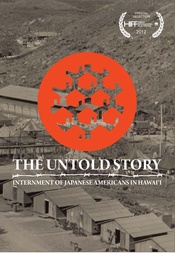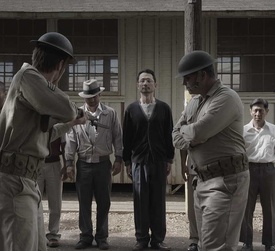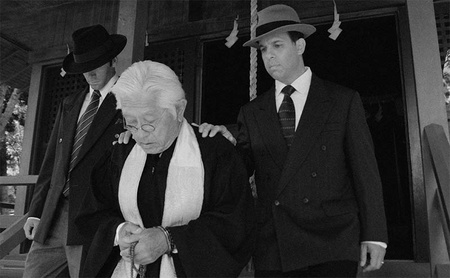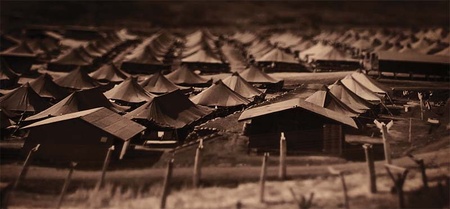As a Hawai‘i-born Yonsei filmmaker, I’ve always been deeply interested in films about the Asian American experience. In 2009, I was asked by the Japanese Cultural Center of Hawai‘i (JCCH) to write and direct a short documentary about the Honouliuli Internment Camp located on the island of O‘ahu. As we began to conduct interviews with survivors and their families, I was exposed to a wealth of oral histories and research that was nearly lost or forgotten.
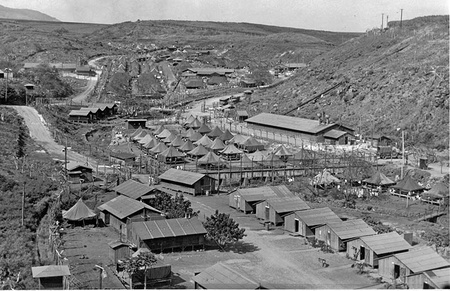
When the short film was completed, we realized we had only told but a small fraction of the Hawai‘i internment story. We immediately realized that a full-length educational documentary about all thirteen of the confinement sites needed to be produced and shared with the community. We recognized early on that while most people in Hawai‘i had heard about the mass incarceration of Japanese Americans on the U.S. Mainland, only a small fraction knew about the upwards of 2,000 internees from Hawai‘i.
The Untold Story draws upon a great deal of archival material from the JCCH Resource Center. In many cases, the source materials from Issei internees like Yasutaro Soga and Otokichi Ozaki were originally written in Japanese and had only recently been translated into English by Resource Center volunteers. For non-Japanese speakers like myself, this material was a revelation and an eye-opening window into the past.
Like many of my generation, I had never heard the first-hand stories of the Hawai‘i internees. The narrative that was presented to the Yonsei generation was simply, “There was no mass internment in Hawai‘i, just a few hundred people who were rounded up and sent to the mainland.”
As I researched the stories of the Hawai‘i internees and began to hear about the injustice suffered, I realized that it did not matter if that number was 2,000 or 120,000. A wrong is still a wrong and the human toll of what happened to the Hawai‘i internees was incredible and staggering.
One of the biggest challenges in making the film was visually portraying this story. There are very few known photographs and no known motion picture footage of the camps and confinement sites in Hawai‘i. I realized that we would need to do a great deal of historical reenactments using actors, so that the audience can hear, see, and feel what the internees experienced. While this was one of the greatest challenges of making this documentary film, it became one of its greatest strengths. The reenactments follow the writings and memoirs of the Issei internees Yasutaro Soga and Otokichi Ozaki, as well as the oral histories of the Nisei internees like Sam Nishimura and Harry Urata.
We reenacted specific events that happened at four of the Hawai‘i sites: the U.S. Immigration Station, Sand Island Detention Facility, Kilauea Military Camp, and Honouliuli Internment Camp. Some of these events included the forced strip searches at the Sand Island Detention Facility and the unsanitary chow line at the U.S. Immigration Station, as well as the fear and uncertainty experienced during the first wave of arrests on December 7th, 1941. During production of the historical reenactment scenes, the actors and crew remarked at how powerful and emotional this part of the project was. For a brief moment we felt their fear, their anger, their sadness, and later their spirit of ganbare. We felt what it was like to walk in their shoes.
Nearly three and a half years later, even though production has long since wrapped, there is still more work to be done. As we began to screen the film around the State of Hawai‘i in 2012 and 2013, new information and new stories began to emerge. I have since revised a scene in the film regarding the location of the Kalaheo Stockade on the island of Kaua‘i, as its true location was uncovered through an interview with a longtime resident of Kalaheo. During a screening on Hawai‘i island, a new lead emerged on the location of the lost Waiakea Prison Camp. As it stands, the exact location of several of the Hawai‘i confinement sites remain unknown despite on-going efforts by the National Park Service and groups like the JCCH to locate them.
After each public event sponsored by the Japanese Cultural Center of Hawai‘i, more and more former internees and their families continue to step forward to share their stories. It is this sharing of new information and continued dialogue that will help fill in some of the missing pieces of the narrative. It is my belief that untold stories of the Hawai‘i internment experience will continue to surface for years to come and the lessons of the past will always need to be shared with future generations.
For more information about the JCCH Hawai‘i Internment Education Committee, please contact JCCH at www.jcch.com.
* * *
FILM SCREENING
The Untold Story: The Internment of Japanese Americans in Hawaii
Saturday, October 26, 2013 • 2PM
Japanese American National Museum
Los Angeles, California
Produced by the Japanese Cultural Center of Hawai‘i, The Untold Story is the first full-length documentary to chronicle the internment experience of Japanese Americans in Hawai‘i. Q&A with filmmakers to follow screening.
© 2013 Ryan Kawamoto


